Marimo moss balls are both bizarre and beautiful plants discovered in the aquarium trade. Many aquarists like the ball shape of this exciting plant.
However, some aquarists prefer to experiment more with their plants. Marimo moss carpet is one such experiment some aquarists try to achieve.
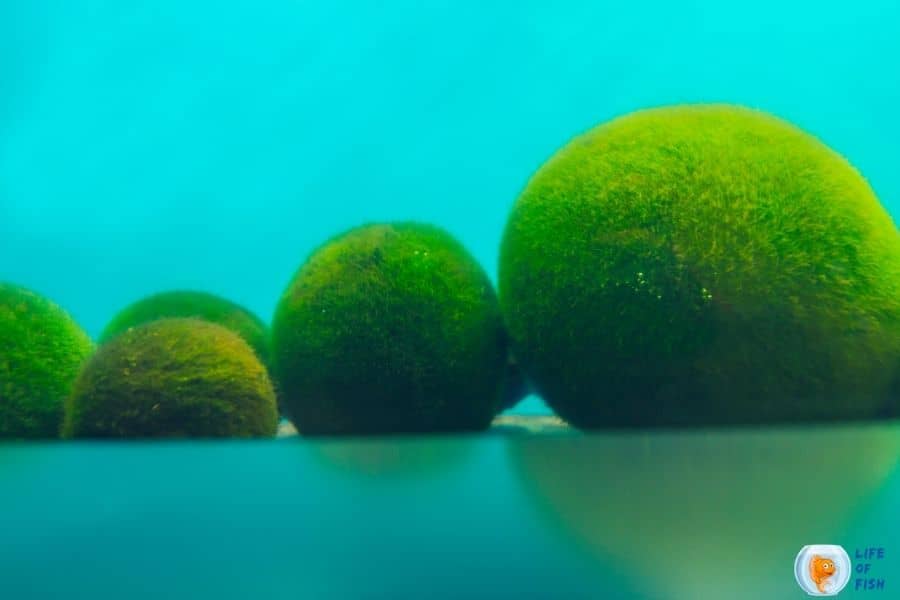
Making a carpet out of marimo moss balls?
Jump To
- 1 Making a carpet out of marimo moss balls?
- 2 How do you use Moss on carpet?
- 3 How to maintain marimo moss carpet
- 4 Can you take marimo moss balls apart?
- 5 Can you cut a Marimo moss ball in half?
- 6 How to take care of marimo moss
- 7 Do Marimo moss balls need food?
- 8 How do you keep moss balls alive?
- 9 How long do moss balls last?
- 10 How do you clean a Marimo Moss Ball?
- 11 How long can a moss ball stay without water?
- 12 Can you kill a Marimo Moss Ball?
- 13 How to make marimo moss balls grow faster
- 14 Can marimo balls multiply?
- 15 Do moss balls Smell?
- 16 How do you revive a dying moss ball?
- 17 Summary
Yes, it is possible. You can tear the marimo moss balls into a carpet shape you like.
You can do this by yourself, but sometimes it might not be so neat at times. It is always better to buy these moss balls directly in carpet form.
How do you use Moss on carpet?
To use moss in a carpet correctly, you will need to anchor the moss into a flat and non-floating object.
The most commonly used method is tying the moss into a mesh and sprinkling a little bit of substrate into the moss, and you can leave it so that it will start to grow on its own.
Apart from these two methods, you can also tie the moss in any stones, driftwood, or other plants.
How to maintain marimo moss carpet
Marimo moss carpets require very little maintenance. You can keep them in tap water or RO water, where you can keep them clean for more extended periods.
These plants can even grow in brackish water conditions.
If your marimo moss plant shows any discoloration, you can always use a pinch of salt and soak it for a few minutes to give its original bright green color back.
Make sure that your tank temperature always stays to the plant’s required levels. These plants develop better in cold conditions.
Ensure to keep the aquarium water temperatures between 76° F. Remember that you must never keep these plants in a place where it gets too much sunlight.
The brown spots which your moss plant gets are mainly due to high heat.
By chance, if the water gets too warm in a warmer month, you can just put the plants in a separate water-filled container, and you can put them in a refrigerator around 24 hours at a time
Marimo moss does not need air, which means you can put them in a sealed container, and still, the plant will survive.
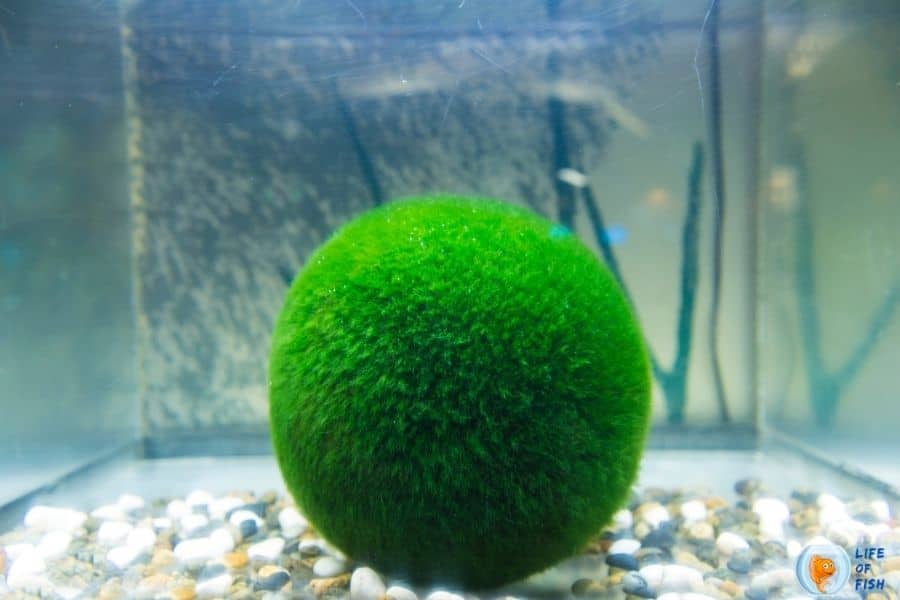
Can you take marimo moss balls apart?
Yes, you can take moss balls apart. These plants are typically slow-growing from a cladophoran algae, which does not spread that easily like many other plants.
Note that you must either glue or tie it to mounts if you remove a piece from the plant.
Unlike many other plants marimo moss plants do not sink on their own, and it has to be tie to a rock or piece of wood, but keep in mind that the growth rate is prolonged.
So you must be very patient when growing these.
Can you cut a Marimo moss ball in half?
Yes. Moss balls do not have a central structure.
So cutting these plants in half or any direction is not an issue. When cutting these moss balls, you must first squeeze the water off the plant and then start to cut with a knife or scissors.
After you have finish squeezing, you must roll the new clumps in your hands to make them tiny spheres.
And then, you must tie the moss balls in some cotton and connect them using a thread to maintain the shape.
How to take care of marimo moss
Taking care of marimo moss is pretty simple. Here are some guidelines for you on how to care for your moss balls.
Light
You must always place your moss balls in a place where they will receive low to medium indirect lighting.
And always avoid keeping these plants facing directly to any sunlight. Because when the plant gets direct contact with the sunlight, it will start to turn brown.
These plants are native to cool lakes and always should be kept in a cool place.
Marmo plants will adapt to low light spaces very quickly and can photosynthesize in normal household light. You can keep your moss plant near a fluorescent or full-spectrum bulb.
Proper water change
Good water change is very important to the plants as this will prevent the waste and dirt from collecting upon your moss plants.
Changing the water frequency and percentage depends purely on the aquarium or the container with which you have kept these plants.
You could do a 50% water change every two weeks if your marimo plants are isolated from any other aquatic plant or animal.
And if you keep these plants in an aquarium with different marine life forms, their changing of the water and percentage depends on the situation.
But keep in mind the change has to be done very frequently.
Cleaning
Suppose your tank has animals that eat algae. You most likely need to do a clean-up for your marimo moss plants very frequently.
You can do that by taking the plants off the water, rinsing them, keeping them in a separate container filled with clean water, and squeezing the plants a few times.
Tank Mates
You can keep many kinds of aquatic animals alongside these moss plants.
But always keep in mind that some fish and invertebrates might eat and damage these marimo moss plants, such as Goldfish, some types of Plecostomus, and giant crayfish.
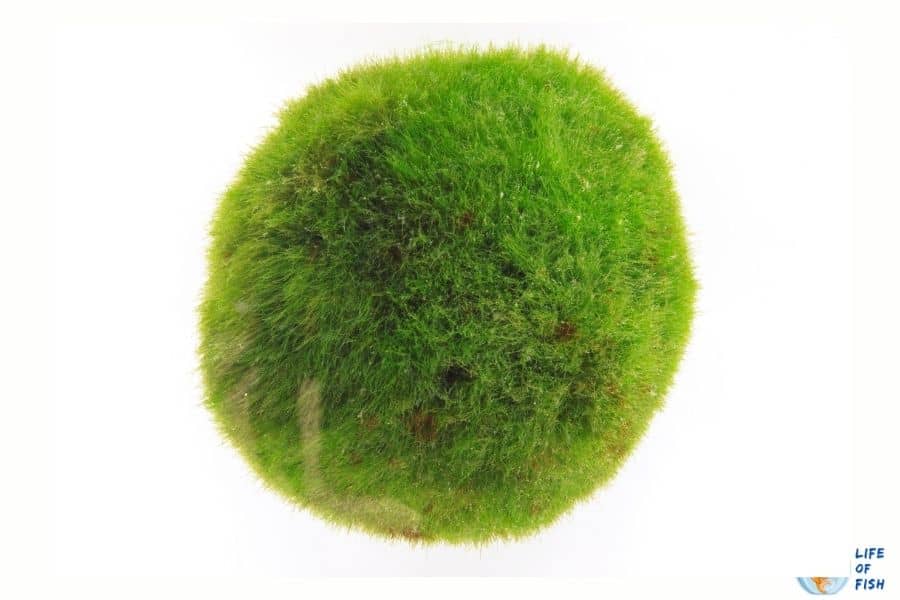
Do Marimo moss balls need food?
No, these plants do not need fertilizers or food because they will create their food through photosynthesis.
You can use any fertilizer or food for other aquatic plants in your tank that may boost their growth. But when it comes to marimo moss plants, it grows very slowly.
It grows around 5 mm per year and will grow about 2 to 5 inches in captivity, and in the wild, it will grow approximately 8 to 12 inches.
How do you keep moss balls alive?
Keeping your moss balls alive is pretty simple, like mentioned earlier. With the proper environment and care, you can keep these moss plants healthy.
Keep in mind to avoid putting aquarium inhabitants such as shrimps and dwarf crayfish in the tank where you have planted these moss plants.
These species will sometimes try to eat these plants and destroy them.
How long do moss balls last?
We can not tell an exact time or date on how long these plants last. World’s largest marimo moss plant is about 95cm in diameter.
Like we said earlier, these plants will grow only 5mm per year, which means the largest marimo plant alive today is around 200 years old.
How do you clean a Marimo Moss Ball?
You can do the cleaning by taking the plants off the water, rinsing them, keeping them in a separate container filled with clean water, and squeezing the plants a few times.
How long can a moss ball stay without water?
In good conditions of water, these plants can live without water for around one month. You must always avoid keeping your moss plants off water for extended periods.
Can you kill a Marimo Moss Ball?
Yes, you can kill your moss plants if you place them in waters with high chlorine levels, such as any untreated tap water and salt water, or a cesspool where there are no proper nutrients in the waste or if you leave them off the water.
You will have a higher chance of killing them. So as long as you keep the tank clean and follow the required guidelines, you will have less chance of killing these plants.
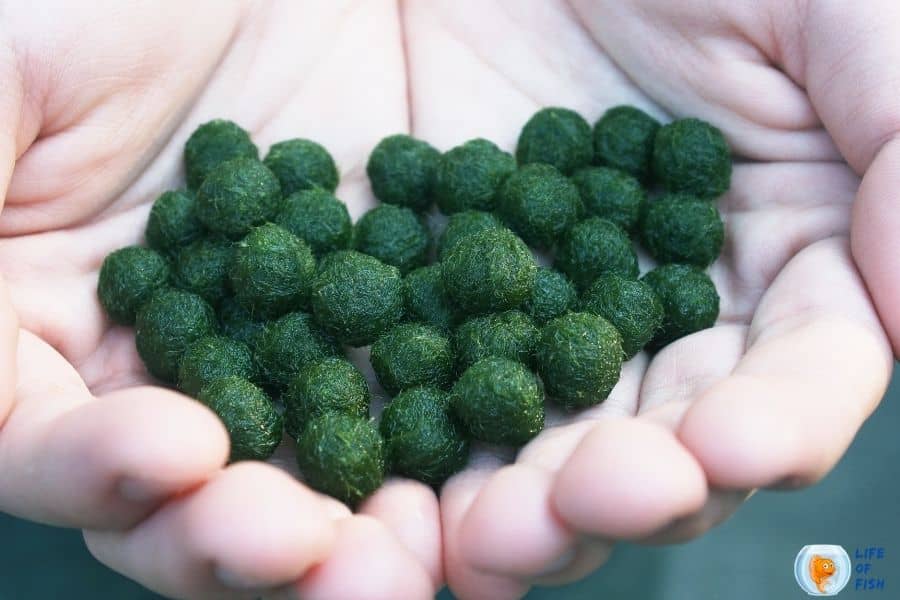
How to make marimo moss balls grow faster
You can try installing a CO2 diffuser in your aquarium. Which typically helps aquatic plants and terrestrial plants grow faster.
If not, you can do water changes every couple of weeks and doing this practice even more often in the summer times when the water tends to evaporate even quicker.
You can use regular tap water but make sure that the water has been sitting for around 24 hours before introducing them to the plants.
Agitate the water now and then so that the marimo moss plants are not resting on the side always. Note that doing this encourages plants to grow even.
Can marimo balls multiply?
Yes, these plants can multiply by reproducing when you keep them in a much bigger water tank.
Always remember not to tear these moss plants constantly. Doing this can damage your plant and even end up killing it.
And if you are lucky enough, your marimo moss plants might reproduce, and you could see a bump growing on them.
Do moss balls Smell?
Yes, if you are not cleaning these plants, you might smell some lousy odor.
When you keep them in the same water for more extended periods and keep them in warm temperatures, moss balls start to smell.
You can avoid that by cleaning them and placing them in freshwater.
How do you revive a dying moss ball?
Fixing a dying moss plant is pretty simple if you follow the below-given steps.
- Take it out of the water and rinse. You can take your marimo moss plant and gently rinse them off. You can do this process using any of the following dechlorinated or purified tap water or bottled aquarium water. Take a water bottle and make some holes in the cap to mimic a showerhead.
- Dunk it. If you still see that your marimo moss plant is dirty even after doing the previous process. You can take a separate container with fresh water, dunk the moss plants into it, and gently squeeze it without damaging it.
- Soak it. After doing steps 1 and 2 and if it is still discolored or looking brownish, you can fill a cup with some blackish water 1.015 sg on your hydrometer. If not, you can use a pinch of salt in the cup and let it soak. Doing this will help your plant to green up.
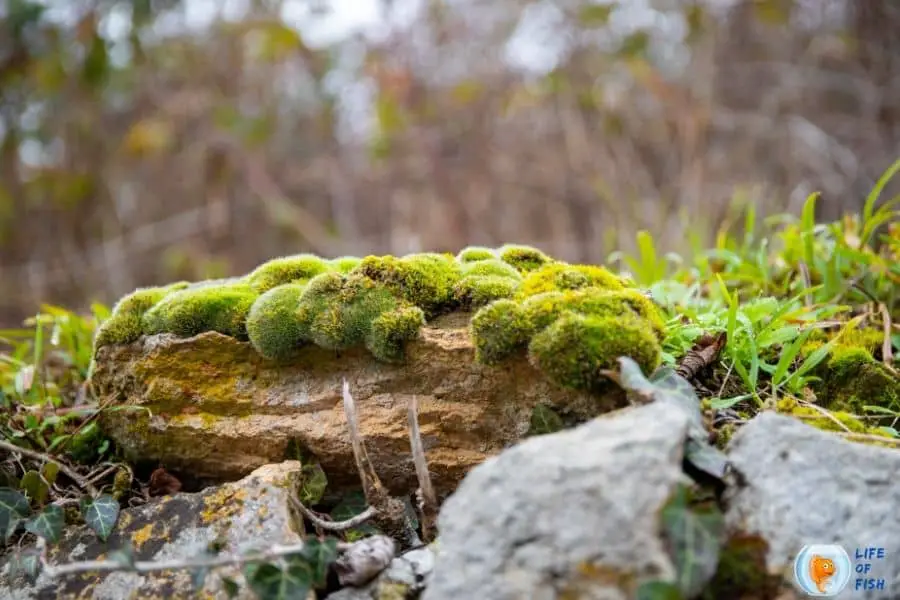
Summary
In a nutshell, if you follow the proper guidelines for these plants, Marimo moss plants can be kept alive for years and eventually grow pretty big.
And always keep in mind that these plants are not the type of plants that grow very fast, so do not expect miracles to happen overnights.
Marimo moss plants are an easy to grow plant that requires significantly less attention and medication.
If you are at a beginner stage or expert stage in these aquatic plantations, you can still grow these plants by following the proper parameters.
Read Next: Awesome Bare Bottom Reef Tank : How To Create It? Full Guide
